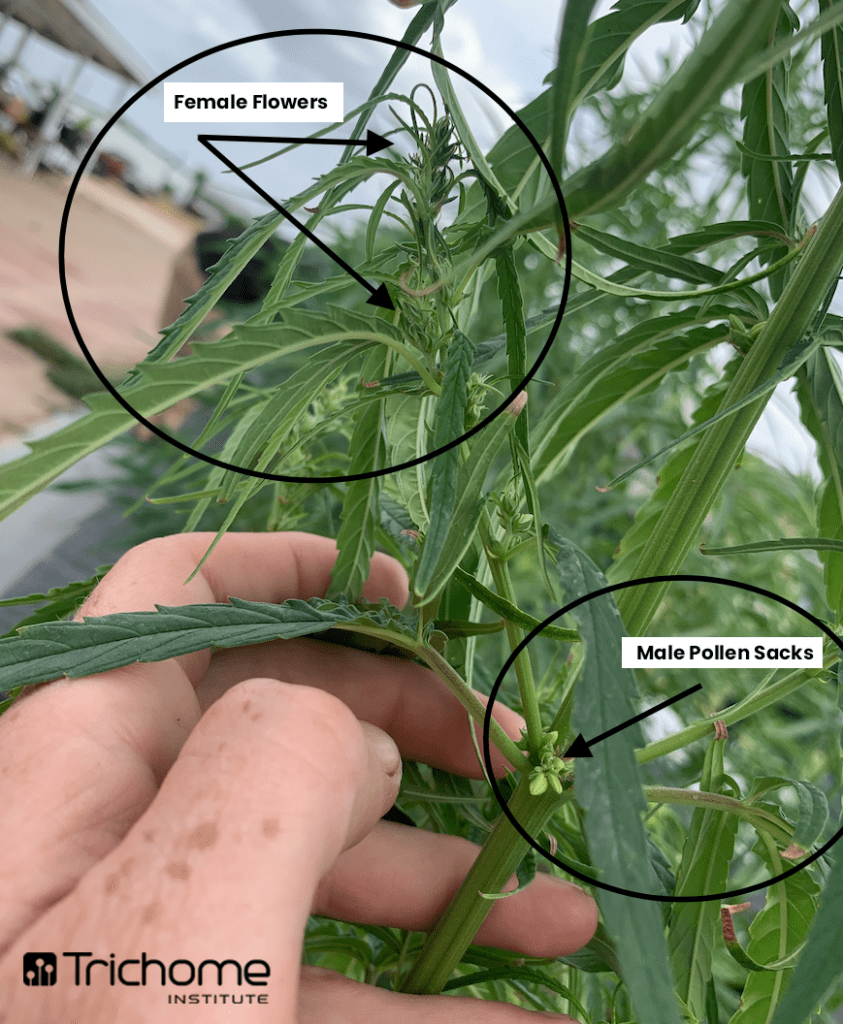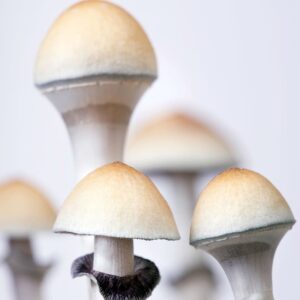Dioecious means a separate male and female that breed with each other instead of a plant with both sex organs and functions. Cannabis is a well-known dioecious species, which is quite rare in the plant world. In fact, compared to monoecious angiosperms (flowering plants) a very tiny percentage are dioecious. The American Journal of Botany lays out “THE RELATIVE AND ABSOLUTE FREQUENCIES OF ANGIOSPERM SEXUAL SYSTEMS” in the article here.
Most plants require the birds and the bees to help them pollinate. Most flowers have sperm and eggs (pollen and ovules) within a single flower that takes some outside force to help put the two sexual parts together. Not cannabis, as cannabis is anemophilous, which means it’s wind-pollinated. This is why the flower of cannabis is green and not colorful since it does not require attracting creatures to it. In fact, it creates smells that repel insects and animals from it, such as bitters, sulfuric thiols, and even insecticides such as the terpene pinene.
I have cultivated and bred cannabis for over 15 years; I’m skilled at spotting males from females, pulling the males out, so our females are seed free. The only time I’ve ever seen, experienced, or heard of cannabis with both sex organs on the same plant comes from a hermaphrodite. Typically female cannabis plants begin growing male pollen sacks from extreme conditions, stress, and or shock. At the end of the day, it’s pretty clear cannabis is one of the rare dioecious angiosperm types; it clearly has a male and female separate from each other. If this were not the case, smokable-flower would most likely be heavily seeded.
Except cannabis never has and will never play by the rules… Cannabis is also a monoecious plant type, and when I first heard about this, I didn’t believe it. With all my experience, I could not believe cannabis was also monoecious; but it is. This does not mean hermaphroditic cannabis are monoecious types, even though all monoecious types are technically a hermaphrodite. This means some cannabis types have a genetic code to naturally produce a monoecious type, not just dioecious types that become a hermaphrodite for some reason. It’s clear when comparing the two as a hermaphroditic dioecious type expresses male flowers on and within the inflorescence of the female flower. In comparison, a true monoecious type demonstrates the male sex organs where they naturally appear on the branch node sites, while further up the branch, you find the female flowers where they typically appear; on the same plant.
I saw my first monoecious cannabis plant last weekend at Texas A&M University, which was really amazing. You can watch the video I took experiencing my first monoecious type from our social media post found here. You can read the hard science about monoecious hemp types in the article, The Complex Interactions Between Flowering Behavior and Fiber Quality in Hemp. “Compared to dioecious cultivars, the monoecious cultivars are more uniform in plant height, stem and seed production (Borthwick and Scully, 1954; Lisson et al., 2000a,b; Amaducci et al., 2008a,b, 2012; Salentijn et al., 2015; Small, 2015). However, while monoecious hemp is better for a dual harvest of fiber and seed, it is considered that dioecious genotypes are superior for fiber production”. Scientifically it’s a fact that cannabis is both dioecious and monoecious. Currently, monoecious types are pretty rare, but they may become the future when used for grain production.
My experience interacting with monoecious cannabis and the hard science about them is only with fiber hemp types. This begs the question, is there such a thing as a monoecious marijuana type? If you know of any monoecious marijuana plants, please share in the comments below!
By Max Montrose
@trichome.institute trichomeinstitute.com @max.montrose.




